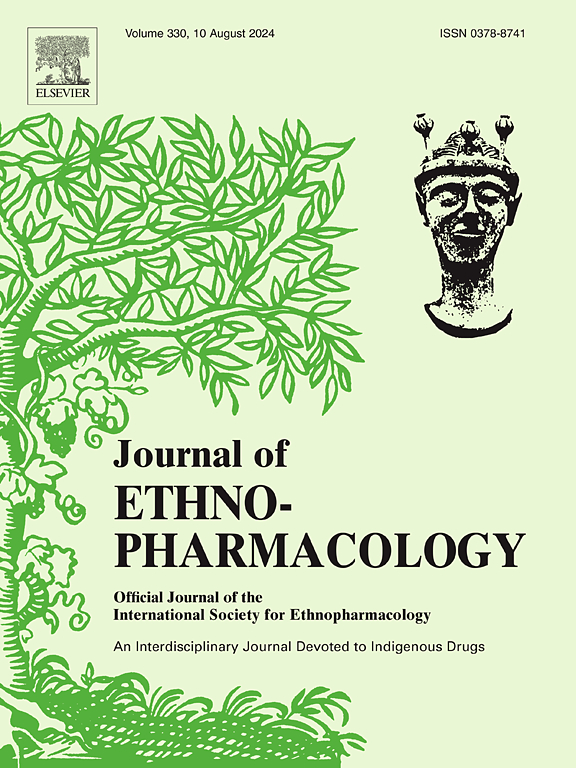Haizao Yuhu decoction ameliorates silica-induced lung injury by inhibiting transforming growth factor-beta1/Smad pathway
IF 4.8
2区 医学
Q1 CHEMISTRY, MEDICINAL
引用次数: 0
Abstract
Ethnopharmacological relevance
Haizao Yuhu Decoction (HYD) is a traditional Chinese herbal formula known for regulating Qi and dispersing stasis.
Aim of the study
This study investigates the effects of HYD on silica-induced lung injury and the underlying mechanisms.
Materials and methods
The main constituents of HYD were identified using ultra-performance liquid chromatography Q-Exactive mass spectrometry (UPLC-QE-MS). Network pharmacology was employed to predict the targets and pathways through which HYD ameliorates silicosis, which were validated in a silica-induced lung injury mouse model and a TGF-β1-induced alveolar epithelial cell model. Pathological evaluation was conducted using hematoxylin-eosin (H&E) and Masson staining, while inflammatory cytokines and fibrosis were assessed via enzyme-linked immunosorbent assay (ELISA) and hydroxyproline quantification. Western blotting (WB) was performed to analyse protein expression levels of targeted markers. Proliferation and migration capabilities of MLE12 cells treated with HYD and its bioactive constituents (glycitein, diosmetin, and limonin) were assessed using cell counting kit-8 (CCK-8) and wound healing assays.
Results
HYD significantly alleviated silica-induced lung injury, reducing inflammatory response and collagen deposition. A total of 176 constituents were identified in HYD, with 111 being pharmacologically active and linked to 1397 potential therapeutic targets, 107 associated with silicosis. Enrichment analyses highlighted the TGF-β1/Smad pathway and epithelial-mesenchymal transition (EMT) in HYD’s anti-silicosis effects, which was validated by the restoration of TGF-β1, p-Smad2/Smad2, p-Smad3/Smad3, E-cadherin, and Vimentin following HYD treatment. Additionally, glycitein, diosmetin, and limonin inhibited the proliferation and migration of TGF-β1-induced MLE12 cells and suppressed the activation of TGF-β1/Smad pathway and EMT.
Conclusions
HYD effectively alleviates silica-induced lung injury by specifically inhibiting the TGF-β1/Smad pathway and EMT process.

求助全文
约1分钟内获得全文
求助全文
来源期刊

Journal of ethnopharmacology
医学-全科医学与补充医学
CiteScore
10.30
自引率
5.60%
发文量
967
审稿时长
77 days
期刊介绍:
The Journal of Ethnopharmacology is dedicated to the exchange of information and understandings about people''s use of plants, fungi, animals, microorganisms and minerals and their biological and pharmacological effects based on the principles established through international conventions. Early people confronted with illness and disease, discovered a wealth of useful therapeutic agents in the plant and animal kingdoms. The empirical knowledge of these medicinal substances and their toxic potential was passed on by oral tradition and sometimes recorded in herbals and other texts on materia medica. Many valuable drugs of today (e.g., atropine, ephedrine, tubocurarine, digoxin, reserpine) came into use through the study of indigenous remedies. Chemists continue to use plant-derived drugs (e.g., morphine, taxol, physostigmine, quinidine, emetine) as prototypes in their attempts to develop more effective and less toxic medicinals.
 求助内容:
求助内容: 应助结果提醒方式:
应助结果提醒方式:


